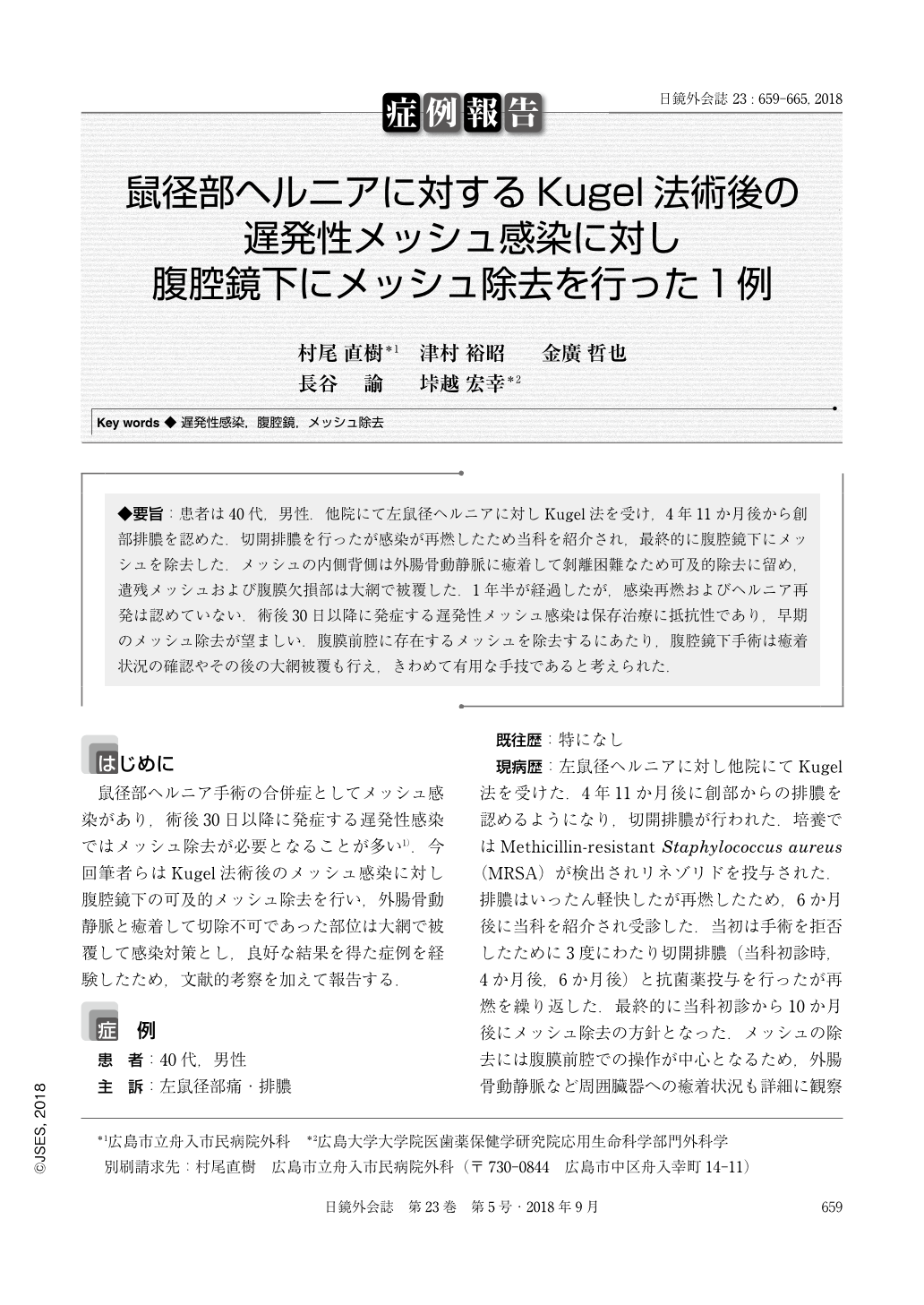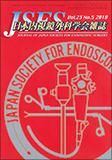Japanese
English
- 有料閲覧
- Abstract 文献概要
- 1ページ目 Look Inside
- 参考文献 Reference
◆要旨:患者は40代,男性.他院にて左鼠径ヘルニアに対しKugel法を受け,4年11か月後から創部排膿を認めた.切開排膿を行ったが感染が再燃したため当科を紹介され,最終的に腹腔鏡下にメッシュを除去した.メッシュの内側背側は外腸骨動静脈に癒着して剝離困難なため可及的除去に留め,遺残メッシュおよび腹膜欠損部は大網で被覆した.1年半が経過したが,感染再燃およびヘルニア再発は認めていない.術後30日以降に発症する遅発性メッシュ感染は保存治療に抵抗性であり,早期のメッシュ除去が望ましい.腹膜前腔に存在するメッシュを除去するにあたり,腹腔鏡下手術は癒着状況の確認やその後の大網被覆も行え,きわめて有用な手技であると考えられた.
The patient is a man in his forties, who had undergone Kugel surgery on left inguinal hernia at other hospital. Purulent discharge from the wound appeared 4 years and 11 months after the surgery. Incisional drainage was performed but the infection relapsed. He was introduced to our department, and finally the mesh was removed laparoscopically. Since the medial dorsal side of the mesh adhered to the external iliac artery and vein, it was difficult to peel off the mesh. We could not remove the whole mesh, but the remaining mesh and peritoneal defect were covered with omentum. A year and a half has passed, but no infection or hernia recurrence has been observed. Late-onset mesh infections that develop after postoperative day 30, are resistant to preservation therapy and early mesh removal is desirable. Laparoscopic surgery was also considered to be an extremely useful procedure to remove the mesh present in the peritoneal frontal space because we could confirm the adhesion situation and subsequently perform omentum covering.

Copyright © 2018, JAPAN SOCIETY FOR ENDOSCOPIC SURGERY All rights reserved.


